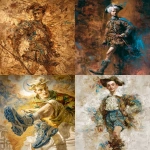Explore the Best AI Image Gallery
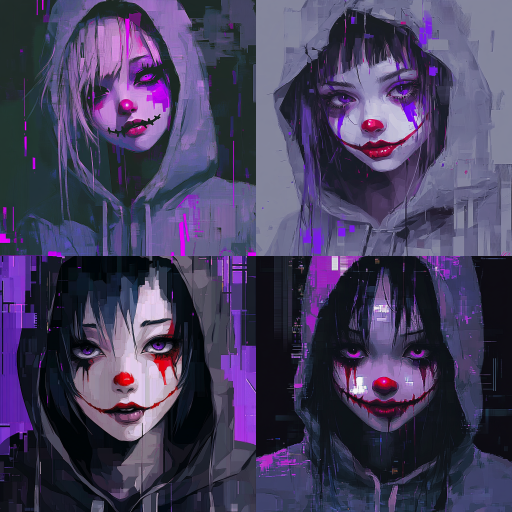
Enhancing Digital Creativity: The Impact of AI on Artistic Expression
Artificial Intelligence (AI) has rapidly emerged as a transformative force within the creative industries. Its ability to analyze vast amounts of data, learn from patterns, and generate innovative outcomes has opened new avenues for artists, designers, and content creators worldwide. From generating artwork to composing music, AI is not just a tool but a collaborator, enhancing and redefining the essence of creativity.
AI in the Creative Industry
AI technologies are being integrated into various facets of the creative industry, enabling artists to experiment and push traditional boundaries. Here are some of the key areas where AI is making a significant impact:
- Generative Art: Artists are using AI algorithms to create stunning visual pieces. Tools like DeepArt and Artbreeder allow users to merge styles and create unique artworks, blending human creativity with algorithmic innovation.
- Music Composition: AI systems, such as OpenAI's MuseNet and Google's Magenta, can compose songs in various genres. These tools analyze existing music compositions to generate original pieces, providing musicians with a novel way to spark inspiration.
- Content Creation: Copywriting tools powered by AI can generate blog posts, marketing copy, and social media content. Applications like Jasper and Writesonic help writers enhance productivity and explore new ideas without the usual creative blocks.
- Video Production: AI is reshaping video editing and production through automation. Platforms like Pictory utilize AI to streamline editing processes, enabling creators to produce high-quality content faster and more efficiently.
Potential Uses and Benefits
The implications of AI in the creative sector are profound, presenting numerous benefits:
- Enhanced Creativity: By handling mundane tasks and data analysis, AI allows human creators to focus on the imaginative aspects of their work. This partnership between human ingenuity and machine efficiency can lead to groundbreaking creations.
- Personalization: AI algorithms can tailor content based on user preferences. For instance, streaming services recommend shows and music based on individual viewing habits, enhancing user experience and engagement.
- Cost Efficiency: Automated tools can significantly reduce the time and resources required for production. This feature is particularly beneficial for startups and independent creators who need to produce high-quality content within limited budgets.
- Democratization of Art: AI tools are becoming increasingly accessible, allowing emerging artists without extensive resources to express their creativity. This shift could lead to a more diverse range of voices in the art world.
Ethical Considerations
Despite the advantages, the rise of AI in creativity brings forth several ethical dilemmas:
- Authorship and Ownership: As AI-generated works become more prominent, questions surrounding copyright and ownership arise. Who owns the rights to an artwork created with the assistance of AI? The original artist, the developer of the AI, or both?
- Content Authenticity: The line between human-created and AI-generated content can blur easily, leading to concerns about authenticity. Misleading representations may impact public trust in artistic expressions.
- Cultural Appropriation: AI systems are trained on vast datasets, which often include works from various cultures. There is a risk that AI might appropriate elements from specific cultures without proper acknowledgment or respect.
- Bias in AI: AI algorithms can reflect the biases present in their training data. This issue can perpetuate stereotypes and exclude marginalized voices from the creative landscape.
Future Trends
The future of AI and digital creativity is bright, with several trends emerging on the horizon:
- Collaborative AI: Future advancements are set to focus more on collaboration between AI and human creators. This collaboration will allow for co-creation, where both parties contribute distinct elements to the final work.
- AI Education for Artists: As AI becomes an integral aspect of the creative toolkit, educational institutions are likely to incorporate AI training into their curricula, equipping artists with the knowledge to leverage these tools effectively.
- Expansion of AI Applications: The use of AI in creativity will continue to expand, particularly in fields like fashion design, architecture, and fine art, leading to new, innovative practices.
- Regulatory Frameworks: As the implications of AI in creativity become more evident, discussions surrounding regulation and ethical guidelines will gain prominence to address the challenges posed by AI advancements.
Conclusion
AI is redefining the landscape of digital creativity, offering new tools that enhance artistic expression while also posing ethical questions that require careful consideration. As artists continue to navigate this emerging area, it is crucial for the creative industry to foster collaboration between human ingenuity and artificial intelligence to ensure that future creativity remains vibrant, diverse, and ethically sound.
Society stands at the precipice of a new era in creativity where the intersection of technology and art opens limitless possibilities. By embracing these changes thoughtfully, we can shape a future where creativity thrives in tandem with AI.
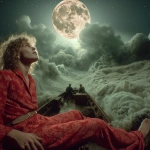
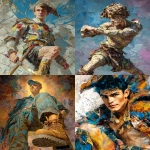




](https://images.ai-img.art/thumbnails/150/8c3bd422d50d35735d8fb33bd314a79e30e5b150129d5d09bdad822a2007593f.webp)
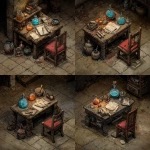
](https://images.ai-img.art/thumbnails/150/1614d64dd7156c95db952258978be809eb3db8cea4453fec69c49cbdfe63fa94.webp)
](https://images.ai-img.art/thumbnails/150/3a60737a5b67fa252207ad1ae6db245a26284f53fb5846996bb34515b39ff269.webp)
